8 Key Marketing Strategies Behind Apple’s Success

Apple is known for its sleek design, intuitive technology, and loyal customers. Behind this success lies a savvy marketing strategy. This article delves into the key tactics that drive Apple’s dominance, providing valuable insights for businesses of all sizes. Whether you’re an experienced marketer or a new entrepreneur, you’ll find useful lessons to help grow your own brand.
Overview of Apple and Its Influences
Founded in 1976 by Steve Jobs, Steve Wozniak, and Ronald Wayne, Apple’s journey began in a California garage. What started as a dream to make technology accessible soon revolutionized home computing with the user-friendly Apple II. Their groundbreaking Macintosh, featuring the graphical user interface (GUI) and mouse, further redefined human-computer interaction.
Apple product:
- Hardware: iPhone, iPad, Mac computer, Apple Watch, AirPods, etc.
- Software: iOS, iPadOS, macOS, watchOS, tvOS, iTunes, Safari, iCloud, etc.
- Services: Apple Music, Apple TV+, App Store, Mac App Store, iTunes Store, iBooks Store, etc.
Figures showing Apple’s Influence:
- On August 2, 2018, Apple became the first publicly traded U.S. company to be valued at $1 trillion, based on market capitalization.
- In August 2020, Apple set a new record as the first U.S. company to achieve a $2 trillion market cap. As of early October 2020, Apple’s valuation was just below this level.
- Since 2010, Apple has consistently been one of the most valuable companies in the world, maintaining a top position for many years.
How Many iPhone Users Are There In The World?
According to Demandsage, there are currently over 1.46 billion iPhone users worldwide. This number is expected to reach 1.56 billion by 2025. The chart below illustrates the growth in iPhone users globally over the years:
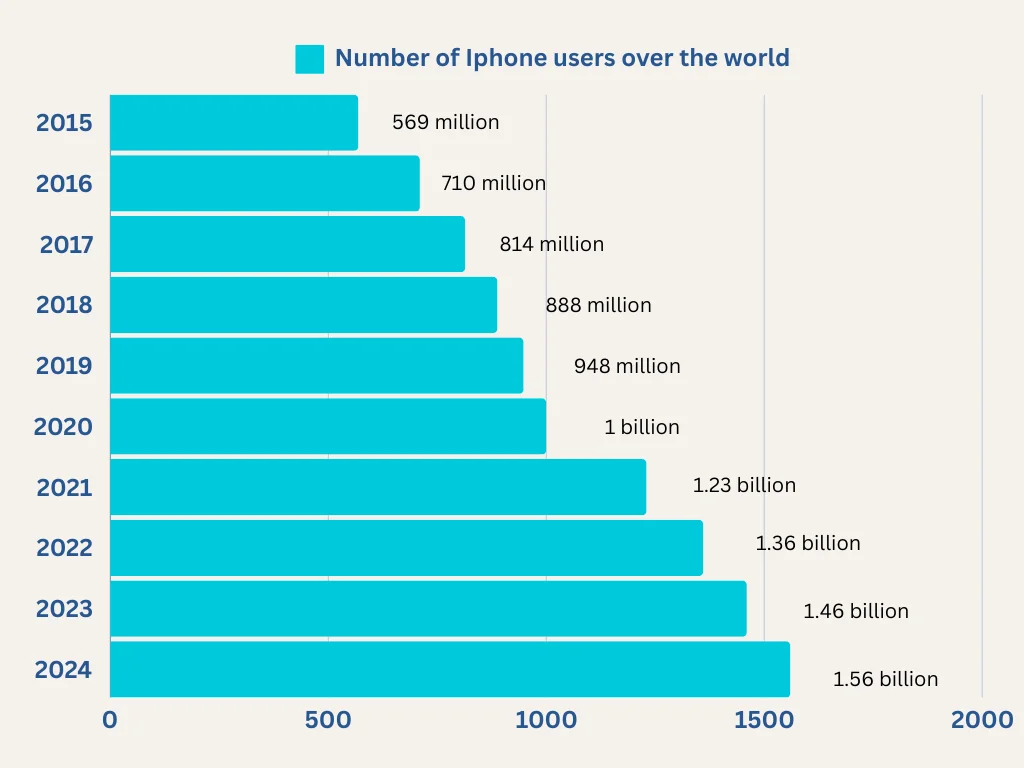
Apple’s high valuation seems straightforward: the company creates popular products with strong profit margins. However, a closer look reveals a history of mistakes, leadership changes, and more. These above paragraphs explore the story behind Apple’s success.
Marketing Mix of Apple
The marketing mix focuses on the 4P variables: product, place, promotion, and price. Apple’s approach focuses on its tech business and operates globally in consumer electronics and Internet services. This puts Apple in competition with companies like Google, Samsung, Microsoft, Sony, Netflix, Disney, Amazon, Facebook, IBM, and Intel. These competitors are known for their innovation and aggressive marketing, leading Apple to create similar strategies and tactics in its marketing mix.
Apple’s Products
Apple’s product mix primarily consists of goods and services related to information technology. However, the company is expanding its range, which might include non-IT products in the future. Currently, Apple’s main product lines are:
- iPhone
- Mac
- iPad
- Wearables, Home, and Accessories
- Advertising
- AppleCare
- Cloud Services
- Digital Content
- Payment Services
Apple’s product mix includes consumer electronics (iPhone, Mac, iPad, Wearables) and online services (Advertising, AppleCare, Cloud Services, Digital Content, Payment Services). Macs offer various desktops and laptops, while the iPhone, iPad, and Apple Watch integrate with other Apple products. Advertising is mainly through the App Store, AppleCare provides warranty and support, iCloud offers storage for Apple and non-Apple devices, Digital Content includes music, videos, e-books, and apps, and Apple Pay integrates with various devices. This ecosystem enhances product appeal and supports Apple’s competitive and growth strategies, reflecting its evolution into a diversified business focused on information technology.
Place or Distribution in Apple’s Marketing Mix
This 4P element focuses on choosing the right places for Apple to distribute its products in target markets. It includes company-owned locations and authorized distributors. The distribution strategy features:
- Apple Store locations
- Company-owned websites and online stores
- Authorized resellers
- Telecommunications companies
Apple Stores are physical locations that sell the company’s products and related items from other manufacturers, like MacBooks and peripherals. These stores are highly visible and recognizable for the brand. In addition to physical stores, customers can purchase products through Apple’s websites and online stores, such as the App Store, helping the company reach international markets effectively.
Apple’s Promotion
This element of the marketing mix focuses on the communication tactics Apple uses to reach its target customers. Apple promotes its products through various channels while emphasizing its premium brand image and product quality. The promotional activities include:
- Advertising
- Personal Selling
- Sales Promotion
- Public Relations
Apple uses online digital advertising, print media, and partnerships with popular websites to promote its products. Personal selling is done by Apple Store employees who provide information to help customers make purchases. Additionally, Apple offers sales promotions, such as discounts on iPhones and iPads for students and military personnel.
Pricing Strategies in Apple’s Marketing Mix
This element of the marketing mix establishes prices for Apple’s consumer electronics and online services. The main pricing strategies are:
- Premium pricing strategy
- Freemium pricing strategy
The premium pricing strategy sets high prices for Apple products, like iPhones, which are generally more expensive than competing smartphones, maximizing profit margins. Although high prices may be seen as a weakness, Apple uses this strategy along with premium branding and innovation to stay profitable and competitive, supported by its company culture.
The freemium pricing strategy combines free and premium pricing, making Apple’s products attractive. Some products are free, but customers pay for advanced features. For example, Apple offers 5 GB of free iCloud storage, but users must pay for additional storage. These pricing strategies reinforce Apple’s premium branding and product design efforts.
8 Key Marketing Strategies That Lead to Apple’s Success
Apple is a marketing masterclass, and there’s a lot to learn from their approach. Here are 8 key strategies that contribute to their success:
- Avoid Price Competition by Emphasizing Unique Value
- Conduct Just-Enough Marketing
- Focus on Story Telling
- Understand What Will Attract Each Customer Segment First
- Create Demand Through Brand Value
- Implement a Multichannel Marketing Model
- Create Communities of Users or Customers
1. Avoid Price Competition by Emphasizing Unique Value
In reality, price competition can harm your business by reducing profit margins, devaluing your brand, and initiating damaging price wars. It often attracts unloyal customers who may switch for better deals while also diverting resources from innovation and quality improvements, which weakens your brand’s market position.
Apple understands this and has never changed its pricing strategy. Apple’s prices are consistently high, and there are rarely any significant discounts. So, why does Apple remain so popular? The answer is, product quality drives nearly 60% of Apple’s success. They focused on developing and upgrading products through two main strategies:
-
Focusing on User Experience: Apple emphasizes seamless integration into users’ lives, highlighting how products like MacBooks and iPhones enhance creativity and capture moments with exceptional quality, fostering an emotional connection.
-
Positioning Products as Solutions: Apple identifies customer pain points and markets its products as solutions. Their watches promote health and connectivity, while AirPods offer seamless transitions between calls and music, simplifying and enriching users’ lives.
When people think of Apple, they often recall its durable products, modern design, upgraded cameras, and smooth operating systems. Here are more details about the key strengths of Apple products:
-
Smooth Operating Systems: iOS and macOS are praised for their stability, ease of use, and security. They offer user-friendly interfaces and useful features, with regular updates that keep devices secure and up-to-date.
-
Good Design: Apple is known for its stylish and high-quality designs, using materials like aluminum, stainless steel, and glass. The iPhone 15, released in 2023, highlights this with its vibrant color choices, such as Green, Blue, and various Titanium shades, appealing to different tastes and styles.

- High-resolution camera: Apple’s high-resolution cameras have transformed smartphone photography by focusing on larger sensors, smart software, and features like dual-lens systems for optical zoom and Portrait Mode. The iPhone 15, with its 48MP camera, blends megapixel improvements with advanced processing and sensor technology for superior low-light performance and sharp details.
- Quick Software Updates: Apple consistently provides regular software updates for its devices, ensuring users always have access to the latest features and security patches. This extends the lifespan of Apple products and maintains their security and up-to-date status.
2. Conduct Just-Enough Marketing
Firstly, no one likes to be bombarded with too much information, endless offers, or technical details. Apple keeps its marketing simple and straightforward. The key is that their products are so appealing that they speak for themselves. Consumers are more interested in how a product will enhance their lives than in the technical jargon or specific features.
Secondly, it might be tempting to spend heavily on PPC ads with Google or Facebook to boost sales, but Apple shows that it’s not always necessary. Instead, Apple focuses on two key strategies:
- Product placement with celebrities and in popular shows
- Generating buzz through positive media reviews
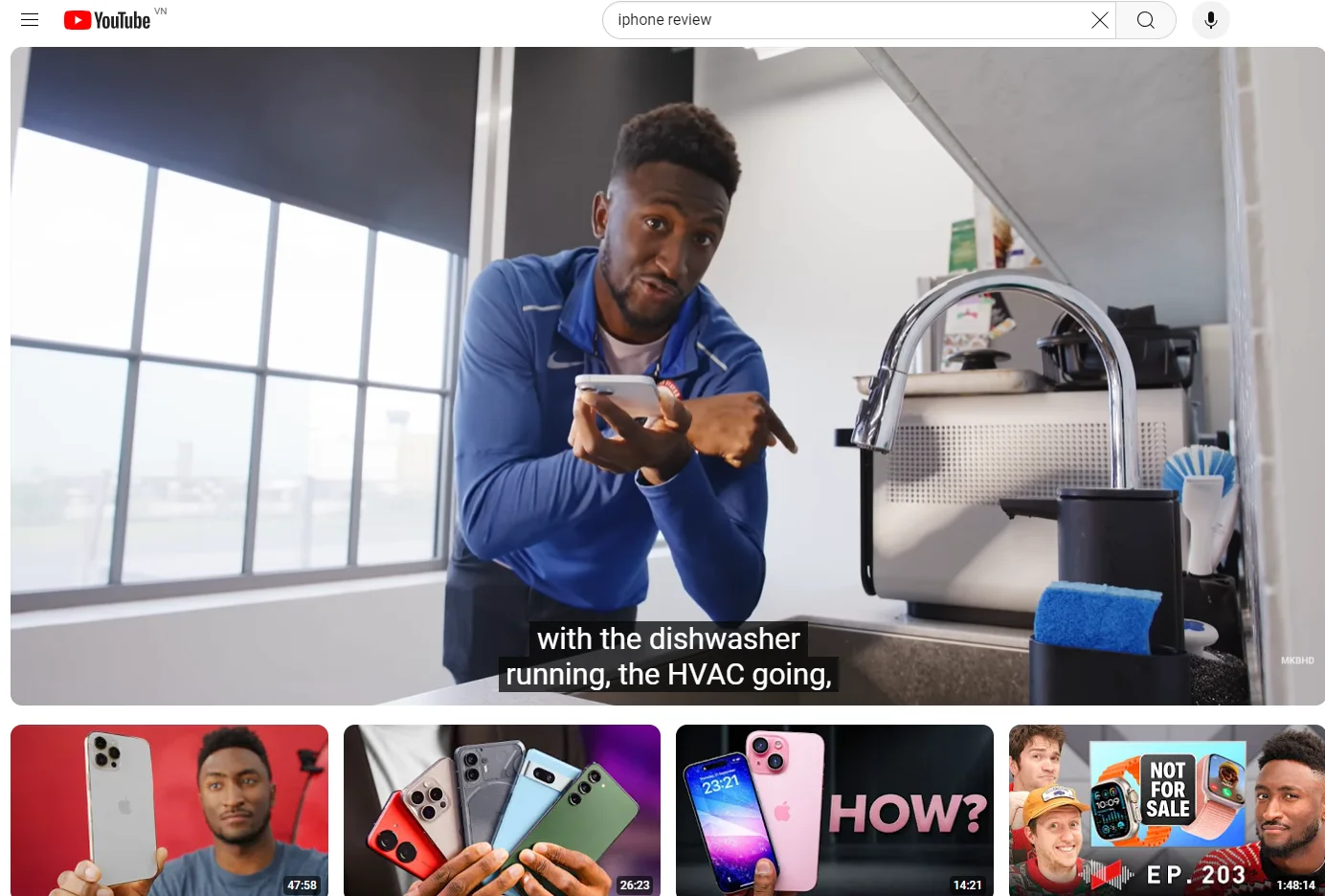
Now, even after a new product launch, Apple doesn’t resort to flashy campaigns or overwhelm customers with numerous ads. Instead, influencers often market Apple products for free, generating organic promotion without any paid bookings.
3. Focus on Story Telling
Storytelling is a key element in Apple’s ads and marketing campaigns. These ads typically feature minimal design and high-quality images, often accompanied by music or a simple narrative. Apple intentionally avoids using jargon or filler language, allowing the product to shine on its own. They focus on showcasing the product’s qualities without discussing its price or using complex technical terms.
Here’s how Apple uses storytelling effectively:
- The Hero’s Journey: Apple and Nike are both masters of storytelling in branding. While Apple inspires creativity and elegance through minimalism, Nike connects through the spirit of perseverance and athletic ambition. If you’re interested in how Nike builds a global brand through powerful storytelling, read our full breakdown of Nike’s marketing strategy here.
- Emotional Connection: Instead of focusing on technical details, Apple highlights the emotional impact of its products, showing how they inspire, connect, and enable self-expression.
- Simple and Evocative Language: Apple uses clear, impactful language that resonates emotionally, avoiding complex jargon. Phrases like “Think different” and “Shot on iPhone” are memorable and effective.
- Visually Stunning Narratives: Apple’s marketing features striking visuals and minimalist design, enhancing their brand’s premium and aspirational image.
- Customer Stories: Apple shares real stories from users about how their products help them create, connect, and succeed, building trust and relatability.
4. Understand What Will Attract Each Customer Segment First
Apple’s success isn’t just about captivating storytelling or minimalist aesthetics; it’s also about understanding what resonates with each customer segment. They don’t blast a one-size-fits-all message – they play a distinct tune for each audience.
Here’s how Apple tailors their marketing for different customer groups:
Young Professionals: Ads feature a sleek MacBook Air, highlighting its portability, long battery life, and smooth integration with other Apple devices. This appeals to those who value efficiency and mobility.
Creative Artists: Ads show the iPad Pro in action for graphic design or music production, emphasizing its high-resolution display, precise Apple Pencil support, and professional apps. This attracts artists looking for a powerful, versatile tool.

Source: Apple News
Students: Ads depict students using iPhones and iPads for collaborative projects, highlighting features like document sharing, educational apps, and note-taking. This appeals to students needing affordable, portable devices for learning and teamwork.
Families: Ads feature parents using iPhones and iPads to manage family schedules, capture moments, and use educational apps. They emphasize parental controls, family sharing, and product durability, resonating with families wanting connected, user-friendly devices.
Tech Enthusiasts: Apple releases detailed blog posts and white papers comparing the latest iPhone’s camera and M-series chips, catering to those who want in-depth technical information and appreciate Apple’s innovation.
5. Create Demand Through Brand Value
Apple isn’t just selling iPhones and iPads; it’s selling a feeling, a lifestyle, and a connection to a brand that resonates deeply with its audience. This powerful brand value is the secret weapon behind its ability to create immense demand for its products, even before they’re launched.
Apple’s marketing campaigns are like perfect mirrors, reflecting their core brand strategy. Here are two prime examples:
Think Different (late 1990s): This iconic campaign wasn’t just about selling computers. It was a celebration of innovation and creativity. Imagine seeing commercials featuring history’s brightest minds like Einstein and Gandhi, all with a message to “Think Different.” This resonated with consumers, encouraging them to see Apple as a brand that pushed boundaries, just like those inspirational figures.
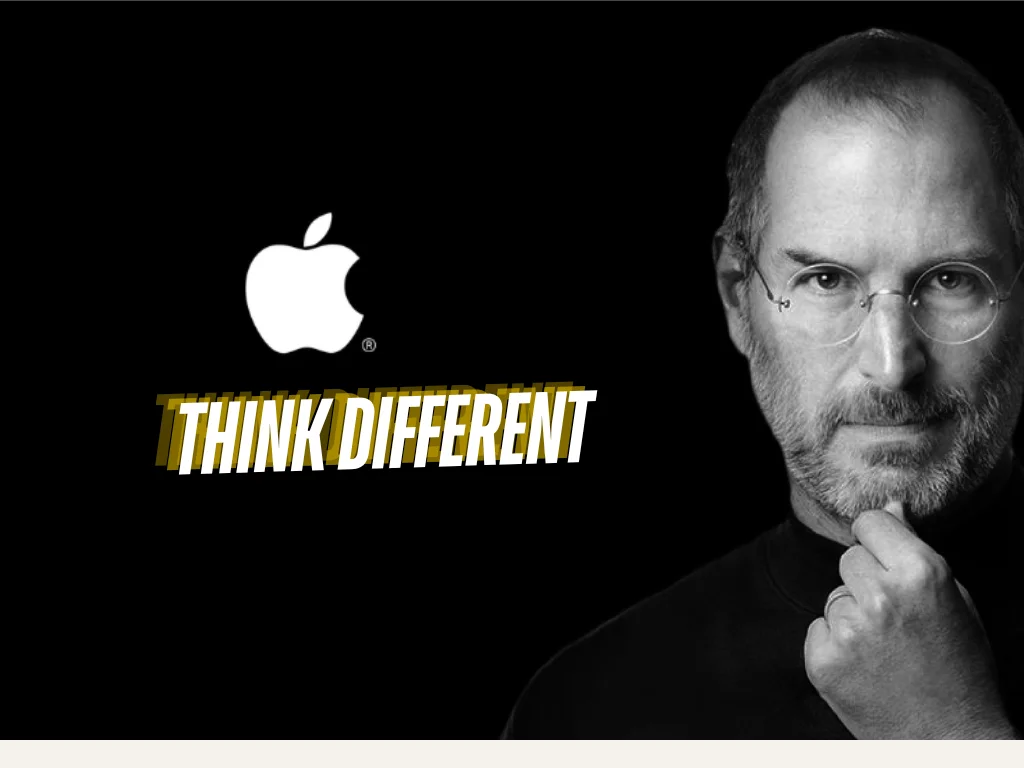
Get a Mac (mid-2000s): This witty campaign playfully compared Apple’s Macs to Windows PCs. Remember those funny ads highlighting Macs’ ease of use and sleek design, contrasted with the more complex Windows experience? It was genius! This campaign positioned Apple as a leader and solidified its image as a company focused on user-friendly and beautifully designed products.
By mastering the art of brand value creation, Apple has positioned itself as a tech company and a cultural icon. Their products are more than just electronics; they’re a status symbol and a gateway to a specific lifestyle, a concept that continues to drive immense demand and solidify their position at the forefront of the tech industry.
6. Implement a Multichannel Marketing Model
Successful marketing involves reaching customers through multiple channels. Apple uses a variety of promotional channels, including television, print, online ads, and social media, to engage a diverse customer base.
For sales, Apple utilizes both online and offline distribution channels. Products are accessible through Apple retail stores, its website, telecom companies like Verizon and AT&T, and authorized resellers like Amazon and eBay.
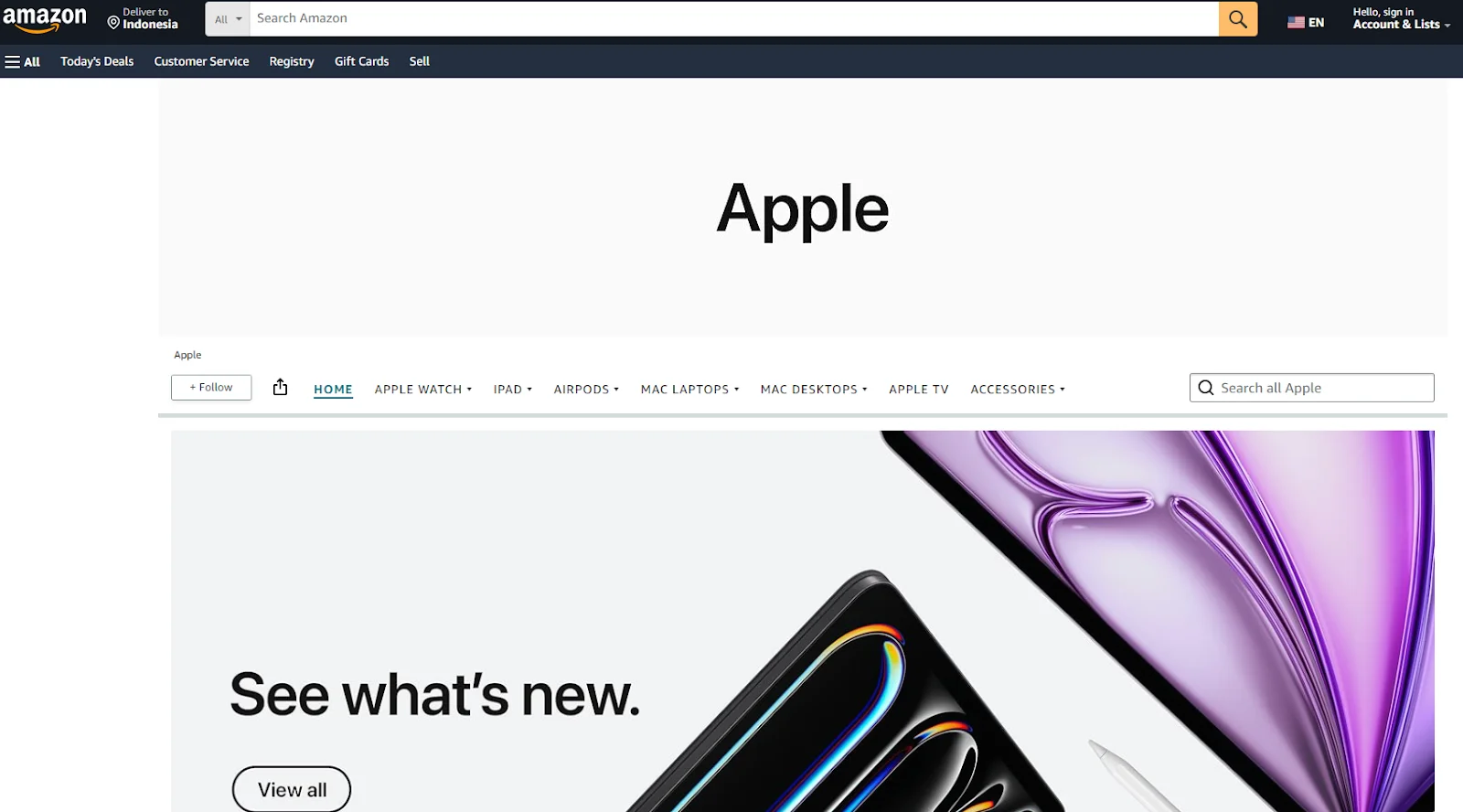
If Apple only sold iPhones in their stores, sales would likely drop due to limited accessibility. According to a 2022 CIRP report, only about 24% of iPhones in the U.S were sold directly by Apple.
Apple’s partnerships with wireless companies have significantly expanded its reach. Apple ensures broader product access by offering multiple purchasing options, driving marketing success.
7. Create Communities of Users or Customers
Apple’s success goes beyond sleek devices and innovative technology. A crucial part of their marketing strategy is fostering vibrant communities around their brand. These communities are more than just fan clubs; they’re spaces for connection, knowledge sharing, and belonging. Here’s how Apple cultivates these communities:
- Apple Stores as Hubs: Apple stores serve as community centers, with knowledgeable staff, workshops, and events that encourage interaction and learning and create a welcoming environment.
- User Groups and Forums: Apple supports user groups and online forums where users can ask questions, troubleshoot issues, and share experiences, fostering peer-to-peer support and a sense of community.
- Social Media Engagement: Apple engages with its audience on social media, responding to comments, answering questions, and participating in conversations, which promotes two-way communication and user-generated content.
- Developer Ecosystems: Apple supports developer communities by providing tools, resources, and support, encouraging the creation of innovative apps that enhance Apple devices and strengthen the ecosystem.
- Shared Identity: Apple products symbolize a shared identity for users, with clean design and seamless user experience fostering a sense of belonging among like-minded individuals who value simplicity, innovation, and quality.
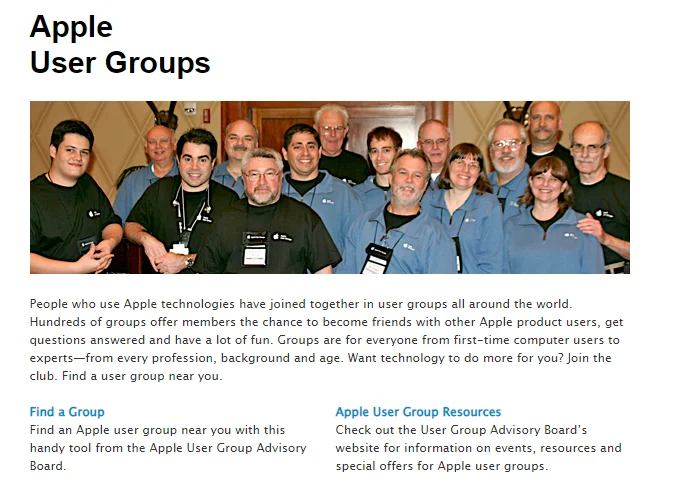
By nurturing user communities, Apple does more than sell products. They create spaces for connection, support, and shared experiences. This approach fosters brand loyalty, drives innovation, and positions Apple as a brand that values its users. It shows the power of community in today’s marketing landscape.
8. Provide Supportive Customer Service
Apple’s exceptional customer service is a key part of its marketing strategy. They understand that more than a great buying experience is needed. They build trust, loyalty, and repeat business by prioritizing customer support. Here’s how Apple creates a seamless customer service experience:
- Knowledgeable Staff: Apple stores have highly trained “Geniuses” who can answer questions, troubleshoot issues, and offer personalized guidance. This ensures accurate and efficient support, making customers feel valued.
- Multiple Support Channels: Apple offers various support options, including online chat, phone support, in-store consultations, and self-service repair guides. Customers can choose the support method that suits them best.
- User-Friendly Support Resources: Apple’s website provides troubleshooting guides, FAQs, and detailed product information, empowering customers to find solutions independently and reducing the need for direct support.
- Focus on Problem-Solving: Apple’s customer service reps are trained to prioritize resolving issues efficiently, making customers feel heard and understood. This personalized approach builds trust and positive brand association.
- Timely Communication: Apple ensures clear and timely communication throughout customer service. Customers receive updates on repair statuses, appointment confirmations, and helpful reminders, keeping them informed and reducing frustration.

Apple’s customer service goes beyond fixing problems; it builds relationships. By prioritizing support, they create trust and loyalty beyond the initial purchase. In today’s competitive market, exceptional customer service is a powerful tool, and Apple excels at making its support experience as impressive as its products.
FAQs
1. What role do Apple Stores play in their marketing strategy?
Apple Stores are more than retail spaces; they’re:
- Community Hubs: Offering workshops, events, and knowledgeable staff for interaction and learning.
- Experience Zones: Allowing customers to try products, test features, and get a feel for the Apple ecosystem.
- Brand Showcases: Reflecting minimalist design and premium feel, reinforcing the brand image.
2. Has Apple’s marketing strategy changed over time?
While core principles remain consistent, Apple adapts its strategies to new technologies and consumer behaviors. For example, their social media presence has grown significantly in recent years.
3. What are some criticisms of Apple’s marketing strategy?
While core principles remain consistent, Apple adapts its strategies to new technologies and consumer behaviors. For example, their social media presence has grown significantly in recent years.
Some criticisms of Apple’s marketing strategy include:
- High Price Point: Apple products are often expensive, which can alienate budget-conscious consumers.
- Closed Ecosystem: Apple tends to prioritize its ecosystem, making it difficult to integrate with other brands.
- Secrecy Can Breed Frustration: The secrecy surrounding new products sometimes frustrates consumers.
4. How does Apple leverage social media marketing?
Apple actively engages with its audience on social media platforms. They:
- Respond to comments and answer questions, fostering two-way communication.
- Participate in relevant conversations, showcasing their brand personality.
- Encourage user-generated content by reposting positive experiences, strengthening brand loyalty.
Final Words
Apple’s marketing isn’t about flashy ads or endless discounts — it’s about clarity, connection, and consistency. Apply these principles, and you won’t just build a product, you’ll build a brand. By learning and applying these strategies, you can create a brand that connects with your audience, builds loyalty, and drives success. Marketing is an ongoing journey. You can emulate Apple’s success and create a thriving brand by continuously learning, adapting, and focusing on customer needs. Take inspiration from Apple, add your unique voice, and start your marketing journey!






![Top 20+ Must-have Shopify Apps for 2025 [Free & Paid] - Mageplaza](https://cdn2.mageplaza.com/media/blog/must-have-shopify-apps/top-must-have-shopify-apps.png)
![[2025 Updates] Top 10+ Upsell Apps for Shopify - Mageplaza](https://cdn2.mageplaza.com/media/blog/best-upsell-shopify-app/cover.png)